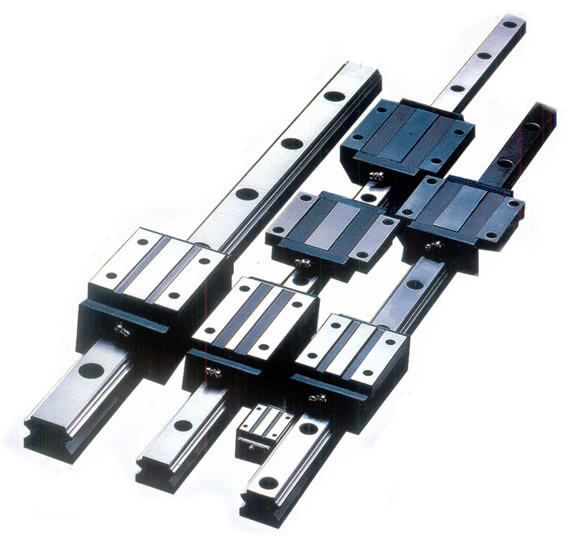带你了解导轨丝杠的制作过程
来源:http://www.jngongrun.com/ 日期:2025-04-19 发布人:
原材料准备
raw material preparation
选择合适的钢材,如碳素钢或合金钢,要求材料具有高强度、良好的耐磨性和耐腐蚀性。根据产品规格,将钢材切割成所需的长度和尺寸。
Choosing suitable steel, such as high-quality carbon steel or alloy steel, requires the material to have high strength, good wear resistance, and corrosion resistance. Cut the steel into the required length and size according to the product specifications.
锻造
forge
将切割好的钢材坯料加热合适的锻造温度范围,一般在 1000 - 1200℃左右。利用锻造设备,如空气锤、摩擦压力机等,对坯料进行多次镦粗、拔长等操作,以改善钢材的内部组织,使其更加致密均匀,提高材料的综合性能,同时初步形成导轨丝杠的外形。
Heat the cut steel billet to the appropriate forging temperature range, usually around 1000-1200 ℃. Using forging equipment such as air hammers, friction presses, etc., multiple upsetting and stretching operations are carried out on the billet to improve the internal structure of the steel, make it denser and more uniform, enhance the comprehensive performance of the material, and initially form the shape of the guide screw.
机械加工
machining
粗加工:对锻造后的坯料进行粗车,加工出丝杠的外圆、螺纹底径等基本形状,留一定的加工余量,一般单边余量在 0.5 - 1mm 左右。同时,对导轨进行粗铣,加工出导轨的大致轮廓和安装面。
Rough machining: rough machining is performed on the forged billet to produce basic shapes such as the outer circle of the lead screw and the bottom diameter of the thread, leaving a certain amount of machining allowance. Generally, the unilateral allowance is around 0.5-1mm. At the same time, rough milling is performed on the guide rail to produce the approximate outline and installation surface of the guide rail.
半精加工:进行半精车,进一步提高丝杠外圆和螺纹的加工精度,将外圆尺寸精度控制在 ±0.05mm 以内,螺纹中径精度控制在 ±0.02mm 以内。对导轨进行半精铣和磨削,使导轨的平面度达到 0.05mm/m 以内,表面粗糙度达到 Ra1.6 - 3.2μm。
Semi precision machining: Perform semi precision machining to further improve the machining accuracy of the outer circle and thread of the screw, controlling the dimensional accuracy of the outer circle within ± 0.05mm and the pitch diameter accuracy of the thread within ± 0.02mm. Perform semi precision milling and grinding on the guide rail to achieve a flatness of within 0.05mm/m and a surface roughness of Ra1.6-3.2 μ m.
精加工:采用高精度的车床和磨床对丝杠进行精车和精磨,将丝杠的外圆尺寸精度控制在 ±0.01mm 以内,螺纹中径精度控制在 ±0.005mm 以内,表面粗糙度达到 Ra0.4 - 0.8μm。对导轨进行精磨和研磨,使导轨的平面度达到 0.02mm/m 以内,直线度达到 0.05mm/m 以内,表面粗糙度达到 Ra0.2 - 0.4μm。
Precision machining: high-precision lathes and grinders are used to perform precision machining and grinding on the lead screw, controlling the outer diameter accuracy of the lead screw within ± 0.01mm, the thread diameter accuracy within ± 0.005mm, and the surface roughness to Ra0.4-0.8 μ m. Fine grind and grind the guide rail to achieve a flatness of within 0.02mm/m, a straightness of within 0.05mm/m, and a surface roughness of Ra0.2-0.4 μ m.
热处理
heat treatment
淬火:对丝杠和导轨进行淬火处理,将其加热临界温度以上,保温一定时间后迅速冷却,使钢材获得马氏体组织,提高其硬度和耐磨性。一般淬火温度在 820 - 860℃之间,冷却介质根据材料和产品要求选择,如水、油或专用淬火液。淬火后,丝杠和导轨的硬度一般可达 HRC58 - 62。
Quenching: Quenching treatment is carried out on the lead screw and guide rail, heating them above the critical temperature, holding them for a certain period of time, and then rapidly cooling them to obtain martensitic structure in the steel, improving its hardness and wear resistance. The general quenching temperature is between 820-860 ℃, and the cooling medium is selected according to the material and product requirements, such as water, oil, or specialized quenching fluid. After quenching, the hardness of the screw and guide rail can generally reach HRC58-62.
回火:淬火后的工件存在较大的内应力,需要进行回火处理。回火温度通常在 180 - 220℃之间,保温时间为 2 - 4 小时,以内应力,稳定组织和尺寸,提高韧性和塑性。
Tempering: The quenched workpiece has significant internal stress and requires tempering treatment. The tempering temperature is usually between 180-220 ℃, and the holding time is 2-4 hours to eliminate internal stress, stabilize the structure and size, and improve toughness and plasticity.

表面处理
Surface Treatment
镀硬铬:为了提高丝杠和导轨的耐磨性、耐腐蚀性和表面硬度,通常会进行镀硬铬处理。先对工件进行除油、除锈等预处理,然后将其放入镀铬槽中,通过电解作用在表面沉积一层硬铬层,镀铬层厚度一般在 0.02 - 0.05mm 之间。镀硬铬后,表面硬度可达 HV900 - 1200,大大提高了工件的使用寿命。
Hard chrome plating: In order to improve the wear resistance, corrosion resistance, and surface hardness of the screw and guide rail, hard chrome plating treatment is usually carried out. Firstly, the workpiece is subjected to pre-treatment such as oil and rust removal, and then placed in a chrome plating tank. A hard chromium layer is deposited on the surface through electrolysis, with a thickness generally between 0.02-0.05mm. After hard chrome plating, the surface hardness can reach HV900-1200, greatly improving the service life of the workpiece.
发黑处理:对于一些有外观要求或需要防锈的导轨丝杠,也可以采用发黑处理。将工件放入发黑液中,在一定温度和时间条件下,使表面形成一层黑色的氧化膜,既能起到防锈作用,又能改善外观。发黑膜厚度一般在 0.01 - 0.02mm 之间。
Blackening treatment: For some guide screws with appearance requirements or rust prevention needs, blackening treatment can also be used. Place the workpiece in black liquor and form a black oxide film on the surface under certain temperature and time conditions, which can not only prevent rust but also improve the appearance. The thickness of the black film is generally between 0.01-0.02mm.
装配与检测
Assembly and Inspection
装配:将加工好的丝杠、螺母、导轨以及其他零部件进行装配。在装配过程中,要严格控制各部件的配合间隙和安装精度。例如,丝杠与螺母的配合间隙一般控制在 0.05 - 0.1mm 之间,导轨与滑块的配合间隙控制在 0.02 - 0.05mm 之间。通过调整垫片、密封圈等零部件,确保装配后的导轨丝杠组件具有良好的运动精度和稳定性。
Assembly: Assemble the processed lead screw, nut, guide rail, and other components. During the assembly process, it is necessary to strictly control the fitting clearance and installation accuracy of each component. For example, the clearance between the screw and nut is generally controlled between 0.05-0.1mm, and the clearance between the guide rail and slider is controlled between 0.02-0.05mm. By adjusting components such as gaskets and sealing rings, ensure that the assembled guide screw assembly has good motion accuracy and stability.
检测:采用三坐标测量仪、激光干涉仪等精密检测设备,对导轨丝杠的各项精度指标进行检测。包括丝杠的螺距精度、导程精度、跳动精度,导轨的平面度、直线度、平行度等。同时,对装配后的组件进行空载和加载运行试验,检测其运动平稳性、噪声、温升等性能指标,确保产品质量符合设计要求。
Testing: Precise testing equipment such as coordinate measuring instruments and laser interferometers are used to test the accuracy indicators of the guide screw. Including the pitch accuracy, lead accuracy, and runout accuracy of the screw, as well as the flatness, straightness, and parallelism of the guide rail. At the same time, no-load and load operation tests are conducted on the assembled components to detect their performance indicators such as motion stability, noise, and temperature rise, ensuring that the product quality meets the design requirements.
本文由导轨丝杠友情奉献.更多有关的知识请点击:http://www.jngongrun.com我们将会对您提出的疑问进行详细的解答,欢迎您登录网站留言.
This article is dedicated to friendship For more information, please click: We will provide detailed answers to your questions. You are welcome to log in to our website and leave a message
- 上一篇:导轨丝杠有什么优势?
- 下一篇:
 带你了解导轨丝杠的制...<>
带你了解导轨丝杠的制...<> 导轨丝杠有什么优势?<>
导轨丝杠有什么优势?<> 丝杠制作复杂吗?<>
丝杠制作复杂吗?<> 导轨丝杠的日常维护:...<>
导轨丝杠的日常维护:...<> 导轨、丝轨、滑块安装<>
导轨、丝轨、滑块安装<>




